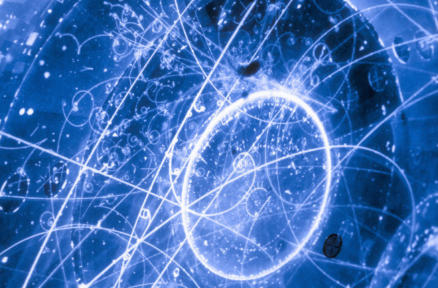The by-products of this chain of reactions are some subatomic particles, and quite a bit of energy. Perhaps
the most interesting of the subatomic particles is a massless, neutral, particle called the neutrino. Whereas the
energy produced by the Sun takes thousands of years to reach the surface, neutrinos pass through the entire
mass of the Sun without impediment to reach the Earth in little over eight minutes.
For the past fifty years or so, many neutrino telescopes, have been constructed, such as the Super
Kamiokande, which hope to detect these elusive particles. Here is a good summary of these experiments.
And here, you can see a real-time feed of the 30 or so neutrinos that interact with the Super Kamiokande
telescope every day.
This Youtube video highlights one such solar neutrino telescope installation, Borexino.
One of the main issues in solar physics is something called the Solar Neutrino Problem. It seems that we
are not detecting the number of neutrinos predicted by our models. One solution to this 'problem' is that one neutrino may oscillate and change into
another type of neutrino.
The Super-Kamiokande detector has been designed to detect solar neutrinos. The latest neutrino dectector is at the South Pole. This is Ice
Cube.
You may well ask, why does all of this business about sub-atomic physics matter? Here is a brief explanation.
Looking for a particular star? Find it here!





























